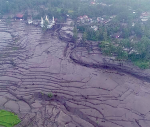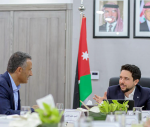You are here
Immunisation independence
Jul 22,2017 - Last updated at Jul 22,2017
By Helen Saxenian and Paul Wilson
The first years of this century have been heady ones for global health.
International donors — whether national governments, such as the United States through its PEPFAR programme, or new international funding initiatives, such as the Global Fund to Fight AIDS, Tuberculosis and Malaria and Gavi, the Vaccine Alliance — have invested billions of dollars in national disease-control programmes and health systems, saving millions of lives.
But now some of the countries that have benefited from these programmes face a new challenge: sustaining the gains they have made once external support is withdrawn.
Ultimately, it is on the basis of this transition that donors’ initiatives — and the health aid enterprise as a whole — will be judged.
Consider Gavi, the Vaccine Alliance. Founded in 2000 by a partnership of major donors, international agencies and vaccine industry leaders, Gavi’s goal is to help the world’s poorest countries introduce new lifesaving vaccines and strengthen their immunisation programmes.
When a country’s annual per capita income rises above a certain threshold — currently $1,580 — it becomes ineligible for Gavi support.
Of course, Gavi does not just cut off funding all at once. Support is phased out over a period of several years.
During this transition period, countries rapidly increase their financial contribution to their immunisation programmes and prepare to assume full responsibility.
This approach, which enables Gavi to concentrate its resources on countries with the greatest need, has been in place since 2010.
But it is now being put to a stern test: one-third of the 73 countries to which Gavi extends support are either in the midst of the transition process or have just completed it.
The group includes countries as different from one another as Armenia, Bhutan, Honduras and Vietnam, as well as India and Nigeria, which have the largest birth cohorts.
The Gavi model is now under the microscope.
Will countries be able to continue purchasing and delivering the vaccines that were introduced with Gavi support?
Equally important, will that commitment hold up over time?
If government budgets are cut, will immunisation be protected, along with other essential health services?
Will countries be able to introduce new lifesaving vaccines as they become available?
Will they sustain and strengthen disease surveillance, so that outbreaks are detected and addressed quickly?
Or will fiscal pressures lead, in some countries, to vaccine shortages, to declines in immunisation coverage or even, in the worst case, to vaccines being dropped altogether from national programmes, reversing the hard-won gains of recent years?
The answers to these questions are important not only for the countries themselves, but also for their neighbours, which could be put at risk by backsliding on immunisation.
After all, infectious diseases do not respect national boundaries.
The recent yellow fever epidemic in Angola, for example, spread to its much poorer neighbour, the Democratic Republic of Congo.
The experiences of countries that have “graduated” from Gavi assistance will also hold important lessons for other international health programmes and their beneficiaries.
With so much at stake, international agencies must do whatever they can to prepare countries for “life after Gavi”.
For some of these countries, especially those that have adopted many new vaccines, obtaining adequate and sustainable financing is one of the most daunting challenges posed by the transition.
Although immunisation programmes require only a relatively small share of health budgets and yield exceptionally high economic returns, securing the needed financing requires careful planning.
A new resource can help countries as they wrestle with this challenge.
“Immunisation Financing: A Resource Guide for Advocates, Policymakers and Programme Managers” provides information on estimating immunisation costs, assessing the pros and cons of various sources of financing, shaping purchasing strategies and navigating policy processes.
It does not prescribe one way forward, but rather provides relevant information and expert analysis.
Countries can then evaluate options in light of their own circumstances, and advocates can ask the right questions.
With Gavi support, close to 580 million children have been immunised since 2000, and more than eight million future deaths have been averted. These are impressive gains that are worth celebrating.
But only if countries successfully negotiate the transition from Gavi support can they be confident that future generations will enjoy the same health protections.
Helen Saxenian is a senior fellow at the Results for Development Institute and a consultant to NGOs and international organisations. Paul Wilson, a senior fellow at the Results for Development Institute, is an assistant professor at Columbia University’s Mailman School of Public Health. ©Project Syndicate, 2017.
www.project-syndicate.org












